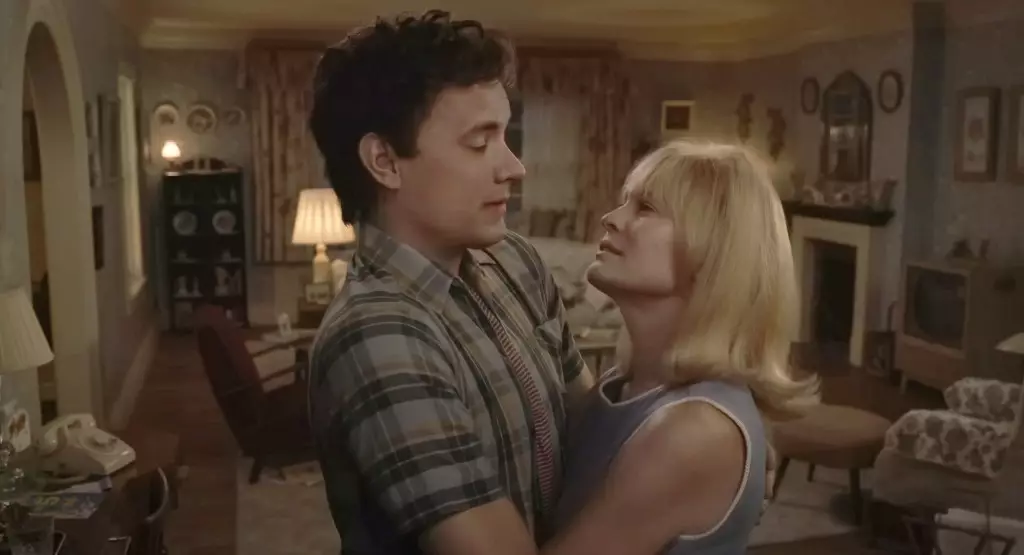Robert Zemeckis has consistently pushed the boundaries of filmmaking, known for his pioneering use of technology and imaginative storytelling. From the revolutionary animation in “Who Framed Roger Rabbit?” to the genre-defining visual effects in “Forrest Gump,” Zemeckis has earned a seat among the cinema greats. Yet, with his latest film “Here,” a project that reassembles several key players from “Forrest Gump,” the director seems to have encountered a critical misstep. The film’s technology, rather than enhancing the story, appears to eclipse it, resulting in dismal reviews and disappointing box office numbers.
“Here,” composed of a multi-generational family drama set in a single location over various timelines, fails to ignite the engaging storytelling that characterized Zemeckis’s earlier works. With a Rotten Tomatoes score of merely 36% and a CinemaScore of B-, it is evident that both critics and audiences found the film lacking. While Zemeckis is celebrated for his creativity, this latest effort feels excessively ambitious, resulting in a cinematic experience bogged down by static imagery and unresolved character arcs. Critics lament that the film’s earnest themes of marriage and mid-life crises come across as mundane and, in essence, uncinematic. Unlike the heartwarming escapism of “Forrest Gump,” “Here” presents a grim worldview through a couple lost in their struggles—hardly the inspirational narrative audiences have come to expect from Zemeckis’s filmography.
While technological innovation has been a hallmark of Zemeckis’s career, in “Here,” it appears that the effects have overshadowed the emotional narratives. The film’s technique of capturing life at a fixed angle may have been intended to evoke the passage of time and the inevitability of change; instead, it feels stifling and contrived, devoid of the warmth that viewers often seek. As much as one might admire technical prowess, the audience yearns for characters they can connect with emotionally. Unfortunately, Zemeckis is left with a sterile portrayal of his protagonists, leading many to draw comparisons with his previous critically scorned works like “Welcome to Marwen,” which similarly prioritizes effect over story.
A Troubling Marketing Strategy
The lack of suitable marketing strategies has also hindered the film’s prospects at the box office. With an opening gross of merely $5 million, “Here” struggles to gain traction in an increasingly competitive market. Reports suggest that many potential distributors opted out due to the film’s unconventional premise, making it a challenging sell. Typically, a film rooted deeply in Americana, like “Here,” thrives on a strong domestic distribution network. However, the film forged ahead without a significant U.S. distributor in place, which proved to be a monumental miscalculation.
Sony stepped in late in the game to salvage the situation, yet by then, much of the audience awareness and excitement had faded. With marketing efforts failing to distill the film’s essence effectively within a short advert, the advertising campaign felt flat. The focus on the nostalgic reunion of the “Gump gang” turned out to be an insufficient draw, unable to compensate for the underlying deficiencies in the narrative.
Contrasting Expectations with Reality
In a revealing interview, Zemeckis credited the former Miramax Head Bill Block for having the vision to bring “Here” to life. Yet, this speaks to a larger issue—did the film truly need to be made in the first place? Zemeckis’s earlier triumphs demonstrated a profound understanding of audience desires, juxtaposed with narrative risks that ultimately paid off handsomely. In contrast, “Here” raises more questions than it answers about the importance of market viability concerning artistic ambition. The film had all the potential to offer a profound exploration of life through the lens of character-driven narratives, yet it veered off course.
As Zemeckis reflects on the ambition required to bring such a construct to fruition, one can’t help but wonder if the allure of technological prowess ultimately clouded the film’s purpose. The project’s overreach highlights a crucial lesson in filmmaking: while the bells and whistles of technology can create unique visual experiences, they cannot, and should not, replace the well-seasoned recipe of compelling storytelling and relatable characters. Though blockbusters often benefit from flashy innovation, the essence of film remains deeply rooted in its ability to forge emotional connections between characters and audiences alike.
As Zemeckis navigates the lessons hinted by “Here,” one hopes that this cinematic misstep leads to a reassessment of priorities in future projects. The truth is, great filmmaking doesn’t need to contrive elaborate gimmicks; it simply needs to resonate with the human experience, one heartfelt story at a time.

